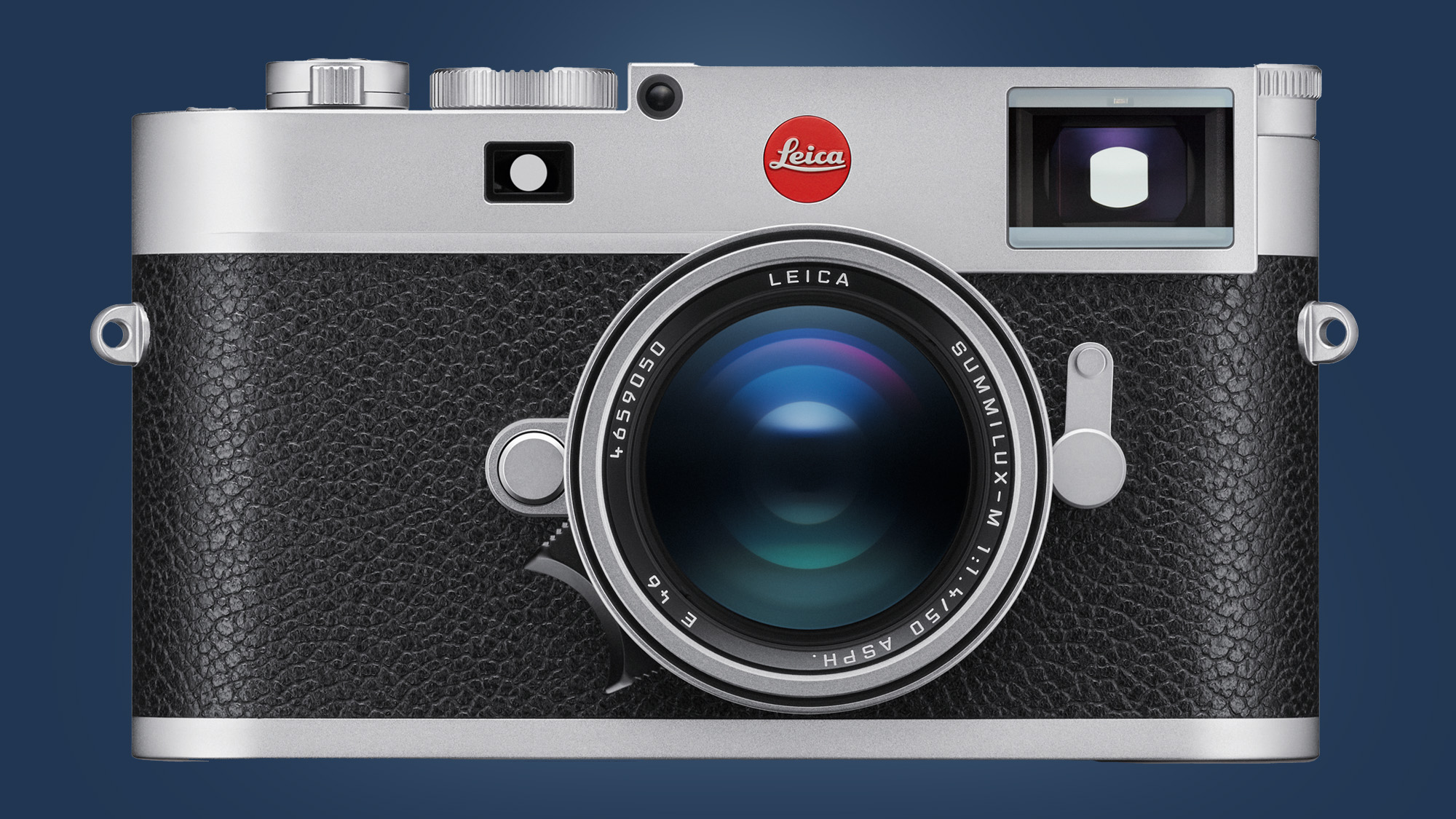The Leica M11 is a surprisingly innovative rangefinder with 64GB internal storage
But it's still distinctly unaffordable for most of us

The long-rumored Leica M11 is finally official – and the 60MP full-frame rangefinder packs some surprisingly innovative features into its classic, retro body.
The M-series dates back to the 1950s and its cameras have typically been old-school in both their design and operation. But the Leica M11 inherits some modern features from its forward-thinking siblings like the TL-series, including 64GB internal storage.
This is the first time an M-series camera has included internal storage, which remains a strangely rare feature on modern mirrorless cameras. The benefit is that you can simultaneously store images on both an SD card and the M11's internal storage – a real bonus for a camera with only one card slot.
Internal storage isn't the only modern convenience hiding under the M11's vintage shell. Its new 60MP full-frame BSI sensor, a big step up from the 40MP Leica M10-R, lets you shoot raw DNGs and JPEGs at 60MP, 36MP or 18MP resolutions, using the full sensor area.
This gives you the option of choosing between maximum detail in 60MP mode, or smaller file sizes and better burst performance. Leica says the lower-resolution modes are achieved by pixel-binning from the 60MP sensor (while retaining 14-bit color depth), and that a new color filter array also creates a more natural color reproduction.
While the Leica M11's design might look similar to its predecessors, there are a few changes that may prove controversial among diehard fans. Firstly, the series' traditional baseplate – which dates back to the Leica M3 in 1954 and had to be removed in order to access its battery or SD card – has now been replaced with a more convenient design that sensibly gives you direct access to both of those things.
Leica has also tweaked the M11's rear buttons and touchscreen menus to match the Leica SL2 and Leica Q2, while its battery has now been boosted to a 1,800mAh capacity from the 1,100mAh cells seen in its predecessors.
Sign up for breaking news, reviews, opinion, top tech deals, and more.
Because it's a rangefinder camera, the M11 has an optical viewfinder and a focusing system that involves manually lining up two images in the center of the frame. But if you fancy ruining its looks with a modern electronic viewfinder, the new Visoflex 2 will be available as an optional extra and will offer a 3.7MP resolution.
With a sprinkling of other modern upgrades, including multi-field metering in rangefinder mode (previously only available in Live View), USB-C charging and the promise of improved connectivity features via a firmware upgrade in the second half of 2022, the Leica M11 is certainly a strong forward step for a traditional camera. Unfortunately, its price tag is very much in classic Leica territory, with the M11 available now for $8,995 / £7,500 / AU$13,500.
Analysis: A smart, but niche, mix of old and new


Leica M-series cameras have always been an acquired taste – you'll either love their rangefinder focusing and classic designs, or see them as anachronistic indulgences with ludicrous price tags. But the Leica M11 looks like a smart attempt to attract a new crowd, while retaining the series' distinctive charm.
Some M-series diehards may bemoan the ditching of the base plate or the M11's adoption of the controls seen on the Leica SL2 or Q2. But those fans probably already own an M-series camera, so Leica has been wise to add new features like a new 60MP full-frame sensor and, most notably, 64GB internal storage.
On the other hand, the M11 still lacks several modern conveniences like in-body image stabilization, autofocus and video recording – and you'll have to be absolutely sure that you're happy with rangefinder focusing before shelling out this kind of money on a camera. For those with more typical budgets, alternatives like the Fujifilm X-Pro3 offer features like a hybrid optical/electronic viewfinder for a far smaller investment.
But like a Porsche 911, It's fair to say that the Leica M11 lives in a world of its own – and if the build quality and shooting experience lives up to its predecessors, it stands a good chance of being another popular installment in a series that goes back almost 70 years.
- These are the best cameras you can buy right now

Mark is TechRadar's Senior news editor. Having worked in tech journalism for a ludicrous 17 years, Mark is now attempting to break the world record for the number of camera bags hoarded by one person. He was previously Cameras Editor at both TechRadar and Trusted Reviews, Acting editor on Stuff.tv, as well as Features editor and Reviews editor on Stuff magazine. As a freelancer, he's contributed to titles including The Sunday Times, FourFourTwo and Arena. And in a former life, he also won The Daily Telegraph's Young Sportswriter of the Year. But that was before he discovered the strange joys of getting up at 4am for a photo shoot in London's Square Mile.